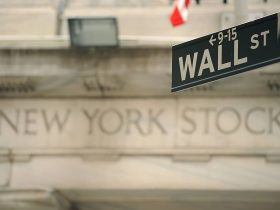This commentary was issued recently by money managers, research firms, and market newsletter writers and has been edited by Barron’s.
Yen Carry Trade’s Future
3rd Quarter Update
Heritage Capital
Nov. 10: Probably the most important news [in the third quarter] that got the least amount of attention was the Bank of Japan’s shift in strategy to allow for more movement in Japanese government bonds. It sounds like nothing, but it is far from that. For decades, the Bank of Japan has purchased almost the entire Japanese bond market. I have heard estimates approaching 90%, so much that its bond market doesn’t have much activity day to day. The BOJ buys bonds to firmly control all interest rates to prevent them from rising.
In turn, the Japanese currency, the yen, has been used in a multitrillion-dollar global trade known as the yen carry trade. Investors borrow money from the Japanese at absurdly low or even negative interest rates in yen and then convert that to dollars. With those dollars, they buy U.S. Treasury bills, notes, and bonds along with some “risk on” assets.
Now imagine that the BOJ decides to let its interest rates fluctuate even a little as inflation has soared and its economy has greatly improved. The trillions of dollars involved in the yen carry trade suddenly need to be repriced, causing market volatility and a number of market dislocations. While this is good news for the Japanese over the long term, it is going to add challenges to the global financial markets as the trade continues to unwind.
Paul Schatz
Venture Capital’s Problem
DataTrek Morning Briefing
DataTrek Research
Nov. 8: Global venture-capital funding will likely remain depressed, given the disappointing performance of recent IPOs, apart from structural opportunities like in AI. More start-ups that raised capital at record rates in 2021 and the first half of 2022 will continue to struggle with getting follow-on investments and could fold as a result. Just last month, two high-profile unicorn companies shut down: digital trucking company Convoy and healthcare-claims management company Olive AI. Both were once valued at almost $4 billion, and had raised nearly $1 billion in funding. VCs are clearly opting for backing established start-ups in secular growth themes, such as AI.
As much as AI has helped, global funding only totaled $221 billion in the first three quarters of this year, down 42% and 56% from the same periods in 2022 and 2021, respectively. The fourth quarter didn’t start off well, with funding in October down 32% month to month even with Google’s large investment in Anthropic. Ultimately, it will likely take a batch of successful venture-backed IPOs and more clarity on the macro front for VC funding to start trending higher.
Jessica Rabe
Why Tech Is Vulnerable
Market Commentary
Cresset
Nov. 8: Notwithstanding the market’s recent reversal, this year’s remarkable performance has left the market’s largest tech stocks vulnerable, as investors worry about future profits. Earnings reports from
Alphabet,
Meta,
and
Apple
were met with widespread selling.
While the market selloff improved their valuations, the tech behemoths nonetheless remain fully valued, and future earnings-growth expectations could be in doubt. The S&P tech sector trades at a high, but not unheard of, 47% forward P/E premium to the
S&P 500.
Historically, tech has had a tough time outperforming the market over the subsequent 12 months at such wide valuation differentials. Last year at this time, the tech sector traded at a more normal 25% valuation premium, leading to a 25% outperformance.
Jack Ablin
Berkshire’s Cash Stash
Earnings Edge
Evercore ISI
Nov. 7: Cash, currently yielding upward of 5% courtesy of the Fed’s aggressive hiking cycle, has become an ever more popular haven in what has been a turbulent sea of monetary, political, geopolitical, and earnings uncertainty. Yet
Warren Buffett’s Berkshire Hathaway,
which acknowledged last Saturday in its quarterly report that cash has risen to an almost unfathomable $157 billion, a figure whereby any one of up to 460 of the S&P 500’s companies could be bought with Berkshire’s trove, was punished by investors.
This, as the Oracle of Omaha’s cash trove is implying that a dearth of high-conviction opportunities for putting that cash to work, is the current state of equity markets.
Julian Emanuel and team
Bullish Investment Strategy
The Market Strategy Radar Screen
Oppenheimer Asset Management
Nov. 6: We remain positive on equities and continue to see “the end of free money” as a good thing for Main Street and Wall Street. Bond issuers now pay for the privilege of borrowing, and bond buyers get something in return in coupon yield when they buy bonds. The “new paradigm” in yield and a renewed vigilance against inflation by the Federal Reserve look to us to be positives.
Stocks remain attractive, with bonds complementary to equities if not quite competitive with their potential for capital appreciation driven by innovation from secular and cyclical perspectives, with companies across the 11 sectors potentially to benefit from greater efficiencies and scale.
Our favorite sectors remain: information technology, consumer discretionary, and industrials. Energy remains attractive with increased M&A/consolidation trending. We continue to favor portfolio design comprised of cyclical sectors over defensive sectors, with “growthier” value and “GARP-ier” growth stocks that ideally pay dividends.
John Stoltzfus, Jim Johnson, Jared Krongold
To be considered for this section, material, with the author’s name and address, should be sent to [email protected].
Read the full article here












Leave a Reply